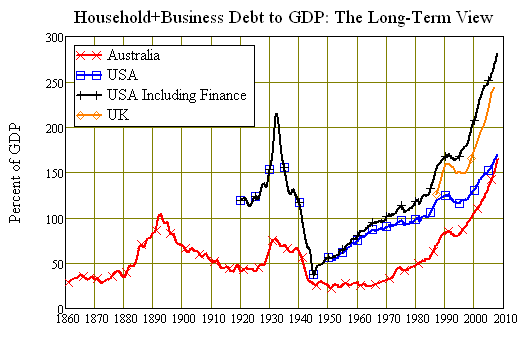Of course there has been inflation over the last 20 years,inflation's underlying cause has been credit growth, take away the credit growth and folks would be surprised how little growth there has been in real terms. If money is printed and transferred to the economy via the credit system then it finds its way into assets, imagine someone buy your house and borrows say 1m, when the house is initially purchased the 1M is transferred to you by the bank, after settlement you have use of that 1m and it joins the economy, the 1m that was borrowed is now locked up in the house as asset, think of each of these loans like breath of air that combined blow up the bubble. This process continues for decades at its evident in the debt to income ratio
During the process the central banks print money, its important to note that its not a US story, the rest of the world did the same, the money printing story is a global one. I note that you repeat "The USA" "The USA"....yes the USA did it but so did the rest of the world
More and more of these printed dollars got locked up in asset prices via debt, in this way the inflation occurred mostly in assets and commodities. Historically this would have been tempered by risk, this time around though derivatives allowed lenders to insure against losses, so the bubble reached proportions never seen before.
Hyman Minsky predicted this process, he hypotisied it end when the capicity to continue to expand credit virtually fails, without getting into the math the game is finally up for the central bankers, they try to lend, they try to print but no matter what they do the size of the debt they have created through cheap credit just overwhlems incomes and even cheaper credit.
The adverse consequences are horrific, mass unemployment and economic collapse at a scale never before seen, lets be clear I am many times more pessimistic .
Always happy its a discussion forum you dont have to have everyone agree with each other, just embrace that and relax a bit
Add to My Watchlist
What is My Watchlist?










